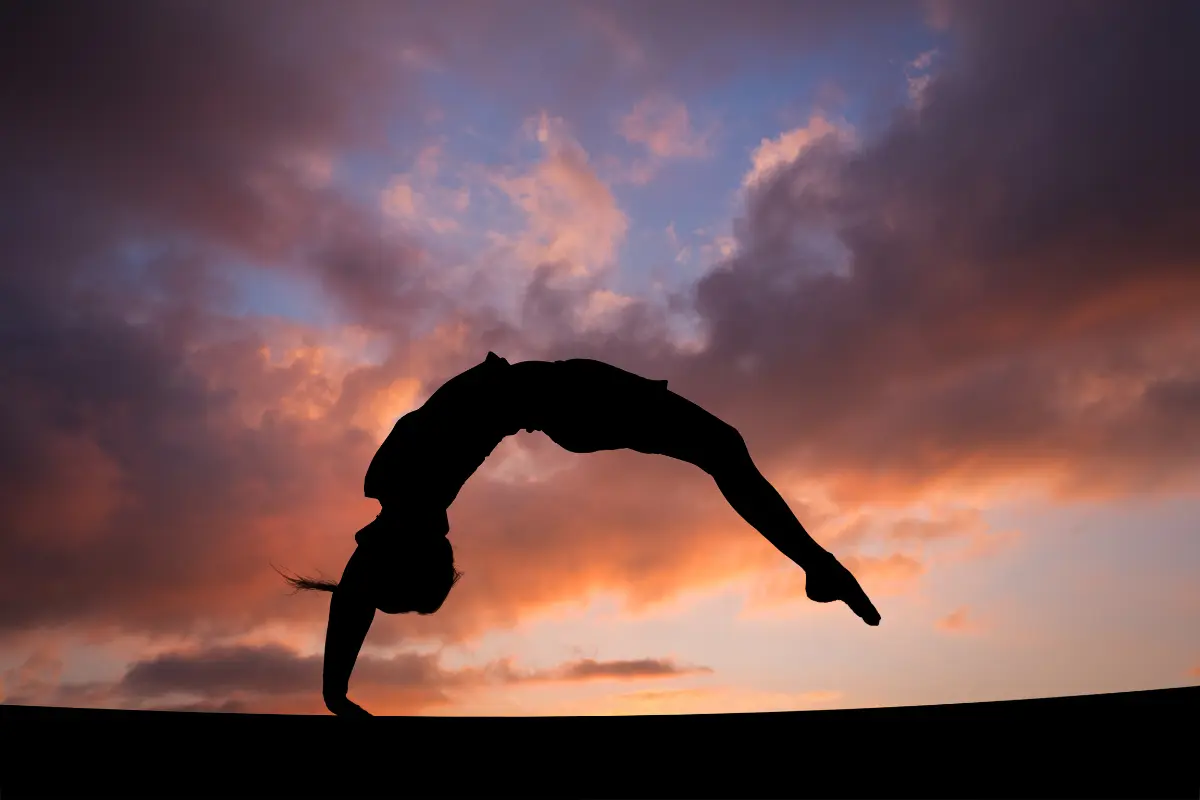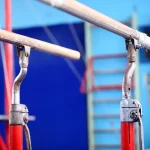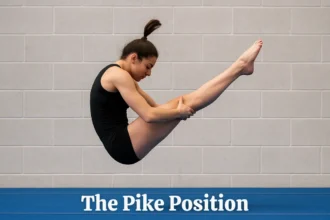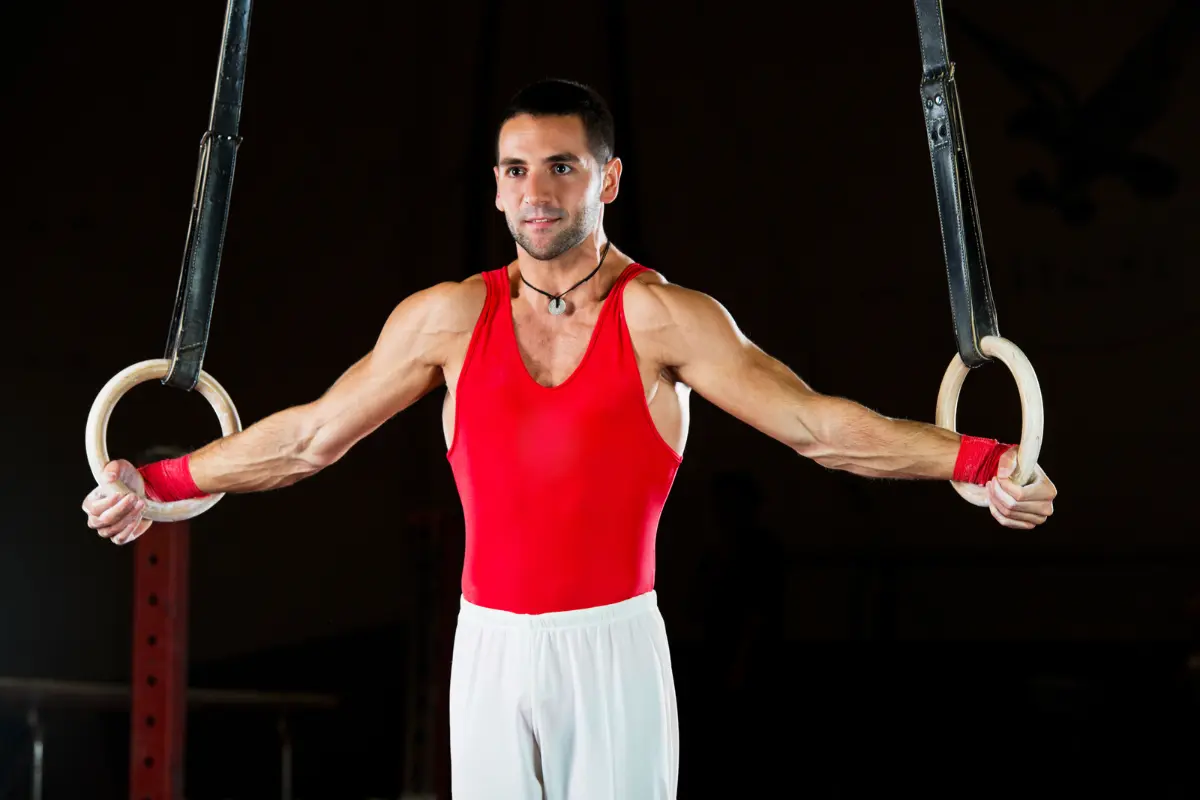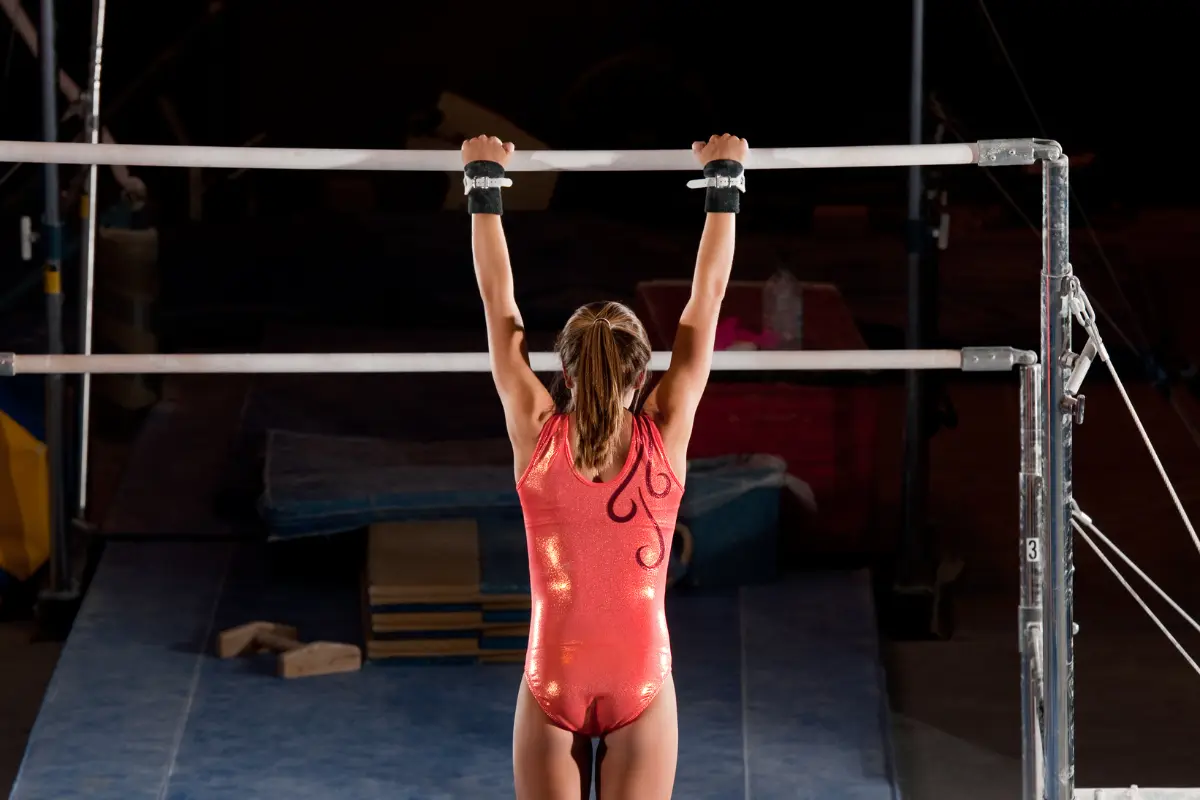A roundoff back handspring is a key move in gymnastics that combines a quick turnaround with a powerful backward flip. Mastering this move is essential for advancing to more complex gymnastics routines.
This guide will walk you through the process of doing a roundoff back handspring step by step, providing simple instructions and helpful tips to improve your technique and build confidence.
Why the Roundoff Back Handspring?
A roundoff back handspring is a dynamic and powerful gymnastics skill that combines two essential movements: the roundoff and the back handspring. It allows gymnasts to increase the difficulty of their routines by linking it with more advanced skills
In competitive gymnastics, the roundoff back handspring is frequently used to connect high-flying tumbling sequences that impress judges and earn higher scores. On the balance beam, this skill helps gymnasts execute advanced dismounts and tumbling sequences with precision and control.
Key Characteristics:
- Generation of Momentum: The roundoff works like a springboard, building up momentum that launches the gymnast into the back handspring with extra speed and height. This makes it perfect for smoothly moving into more complex tumbling passes.
- Body Position and Alignment: The roundoff involves a 180-degree turn, which shifts the gymnast from facing forward to backward. This twist helps align the body correctly for a smooth back handspring.
- Energy Efficiency: By combining the roundoff and back handspring into one sequence, gymnasts save energy and boost power. This efficiency is essential for longer routines where conserving energy is important.
Mastering the Roundoff Back Handspring: A Step-by-Step Guide
Before starting your roundoff practice, it’s important to warm up properly to prepare your body and reduce the risk of injury. Begin with light aerobic exercises, like jogging or jumping jacks, to get your blood flowing. Then, focus on dynamic stretching exercises that target key areas such as your shoulders, wrists, hamstrings, and ankles.
Step 1: Practice the Roundoff
This phase sets the foundation for the entire move, providing the momentum and positioning necessary for a successful execution. Here’s how to practice and perfect this step:
1. Starting Position
Start your roundoff by standing tall with your feet together and your arms extended straight above your head. This position is crucial for generating the momentum you need for the roundoff. Keep your eyes looking forward to help maintain balance and ensure that your movements are aligned as you perform the skill.
2. Initiate the Cartwheel Motion
To begin the roundoff, take a strong step forward with your dominant leg. Lean forward and place your hands on the ground in a cartwheel position, with your fingers spread wide for stability and your arms fully extended. This move sets the path for your legs to kick over your head in a smooth, fluid motion, similar to performing a cartwheel.
3. Kick Over with Momentum
During the roundoff, lift your back leg forcefully while pushing off your front leg. This creates a strong kick over your head. Keep your body straight and aligned, making sure your legs pass over your head in a controlled motion. This step is essential for building the momentum needed for a powerful roundoff.
4. Hand Placement and Block
As you transition from the cartwheel position, place your hands quickly side by side on the ground to redirect your momentum. Push off the ground with your shoulders in a blocking motion. This is key for generating the height and power needed for the roundoff. The shoulder block helps propel your body upwards and prepares you for the next movements.
5. Turn and Snap
Once your legs pass over your head, rotate your body to face the direction you started from. This rotation should be quick and controlled, leading into a snap-down motion where your legs come down together to land at the same time. Aim to land on the balls of your feet with your chest up and your arms reaching towards the ceiling. This ensures a balanced and upright finish.
5. Rebound and Finish
After landing, use the energy from your roundoff to rebound upwards. This rebound not only completes the roundoff but also sets you up for the next skill, such as a back handspring. Finish in a controlled stance with your feet together and your arms by your sides, showing a clean and precise execution of the roundoff.
To ensure your roundoff is effective:
- Block off your shoulders: This action propels you into the air, providing the height and momentum needed for the subsequent back handspring.
- Land with your chest up: Upon completing the roundoff, aim to land with your chest upright and your body in a tall position, preparing for the next move.
- High Rebound: A good roundoff will have a high rebound, indicating that you’re ready to continue into the back handspring.
Step 2: Practice the Back Handspring
The back handspring is a backward jump into a handstand, followed by a push-off to land on your feet. Follow these steps to practice:
1. Starting Position
Begin by standing tall with your feet shoulder-width apart and your arms extended straight up above your head. This stance helps align your body and sets you up for a strong takeoff. Engage your core and keep your eyes looking forward to maintain balance and focus as you get ready to start the back handspring.
2. Jump and Takeoff
To start the back handspring, perform a small jump backward while swinging your arms down and then up in a circular motion to create momentum. Slightly bend your knees during the jump to absorb the impact and add extra power for the takeoff. This movement is key to getting the height and backward rotation needed for a successful back handspring.
3. Hand Placement and Body Position
As you jump, quickly place your hands on the ground shoulder-width apart with your fingers pointing forward. Keep your arms straight and strong to support your body weight. When you place your hands, arch your back and push your hips upward, forming a slight arch with your body. This helps you maintain balance and control as you move through the back handspring.
4. Drive and Rotation
Once your hands are on the ground, drive your legs over your head in a quick, explosive motion. Use a combination of shoulder push and hip extension for this drive. Keep your legs straight and point your feet towards the ceiling as they pass over your body, maintaining a streamlined shape that helps with rotation and momentum.
5. Handstand Phase
During the back handspring, your body should briefly pass through a handstand position, with your legs directly over your shoulders and your body forming a straight line. This phase is crucial for gaining height and keeping control throughout the skill. Focus on keeping your core tight and your body aligned to avoid any unwanted deviations.
6. Snap Down and Landing
As your legs start to descend, snap them down quickly to generate forward momentum for your landing. Aim to land on the balls of your feet with your knees slightly bent to absorb the impact. Keep your chest up and swing your arms forward to help with balance and get ready for the next move. A controlled and balanced landing is essential for the overall success of the back handspring.
A back handspring requires a strong and consistent execution. Here’s what you should focus on:
- Pop off the ground: As your hands make contact with the floor, push off quickly to return to a standing position.
- High Rebound: Maintain an upright posture with a high rebound to prepare for any connected movements.
Step 3: Connect the Skills
Once you have perfected both the roundoff and the back handspring, it’s time to connect them. This can be tricky, so follow these steps for a smoother connection:
1. Back Handspring with Arms at 90 Degrees
Start practicing back handsprings with your arms bent at a 90-degree angle to mimic the body alignment needed after a roundoff. This setup helps you keep your momentum and form when moving from the roundoff to the back handspring.
Focus on using your legs to drive the movement instead of relying too much on your arms. This practice helps your body learn the right posture and momentum for a smooth transition. Doing it this way prepares your muscles to handle the shift efficiently.
2. Spotting and Assistance
Having a spotter can make it much easier to connect the roundoff and back handspring, especially if you’re new to it. The spotter should stand on your dominant side and be ready to support your back and legs during the move.
They can guide you through the motion, helping you keep the right form and alignment for a smooth connection. Start with more help from the spotter and gradually reduce it as you get more confident and improve your technique. The goal is to get comfortable with the flow of the combined skills while staying safe and executing them correctly.
3. Incremental Steps
Begin by doing a roundoff and taking a short pause before you do a back handspring. This step-by-step approach lets you focus on each part of the move separately, helping you master the transition gradually.
At first, take a moment after the roundoff to regain your balance, then go into the back handspring. As you get more comfortable, shorten the pause until you can do the roundoff and back handspring right after each other.
This method helps you build the muscle memory needed for the combined move, making sure each part is done with precision and control before you try doing them seamlessly.
4. Working Towards a Fluid Motion
To smoothly connect the roundoff and back handspring, try to shorten the pause between the two moves over time. Visualize the sequence and mentally prepare for a smooth, continuous motion.
Start by doing the roundoff with a strong rebound and immediately go into the back handspring, focusing on keeping your momentum and form throughout. With each practice, aim to reduce the transition time more, working towards a single, fluid motion.
Building confidence in your ability to perform both moves smoothly will help you achieve a dynamic and fluid performance. Using positive affirmations and visualizing success can also boost your confidence and improve your execution.
Final Words
To successfully perform a roundoff back handspring, it’s important to break the move down into smaller steps, concentrating on the correct form and technique at each stage. Regular practice, along with helpful feedback and a positive attitude, will help you build the confidence and muscle memory needed to execute this move smoothly and powerfully.
